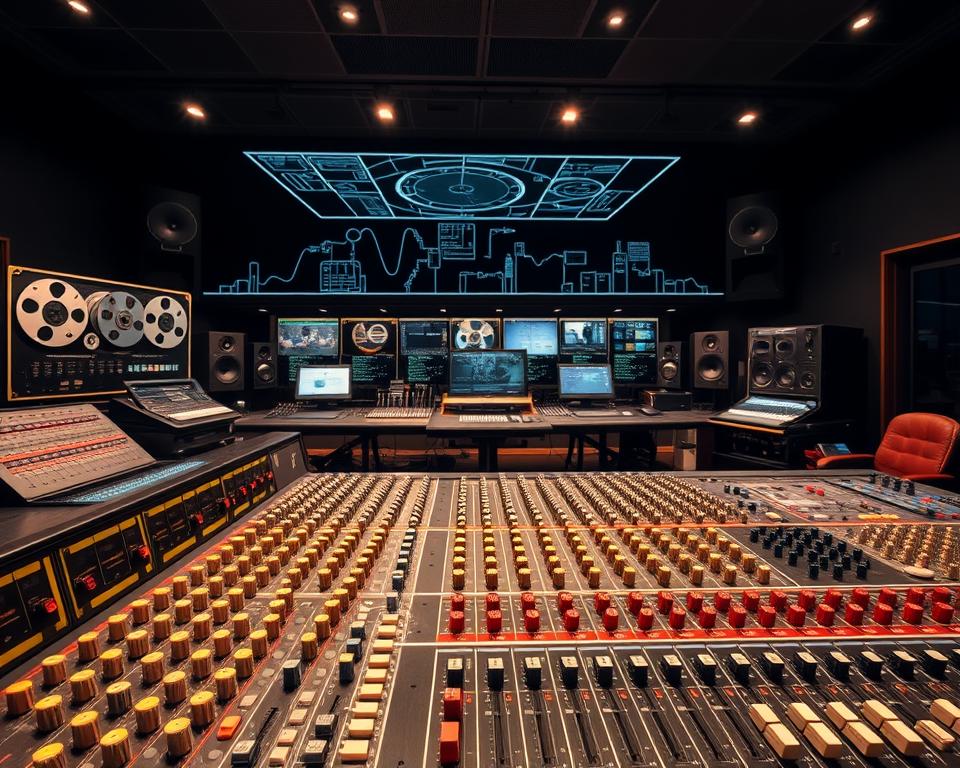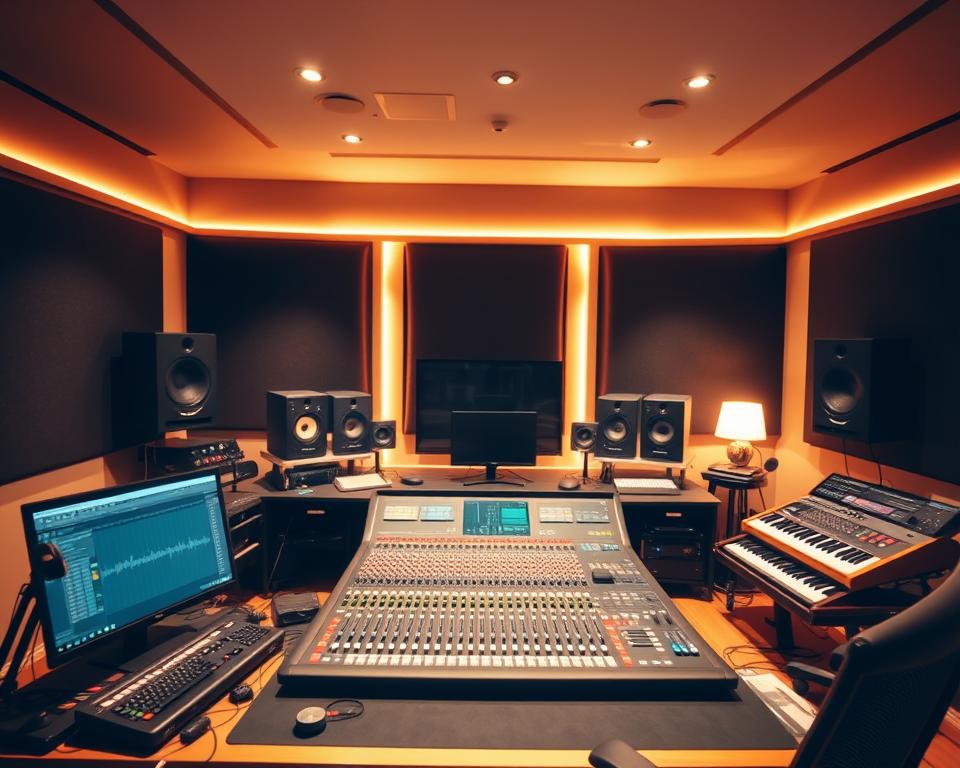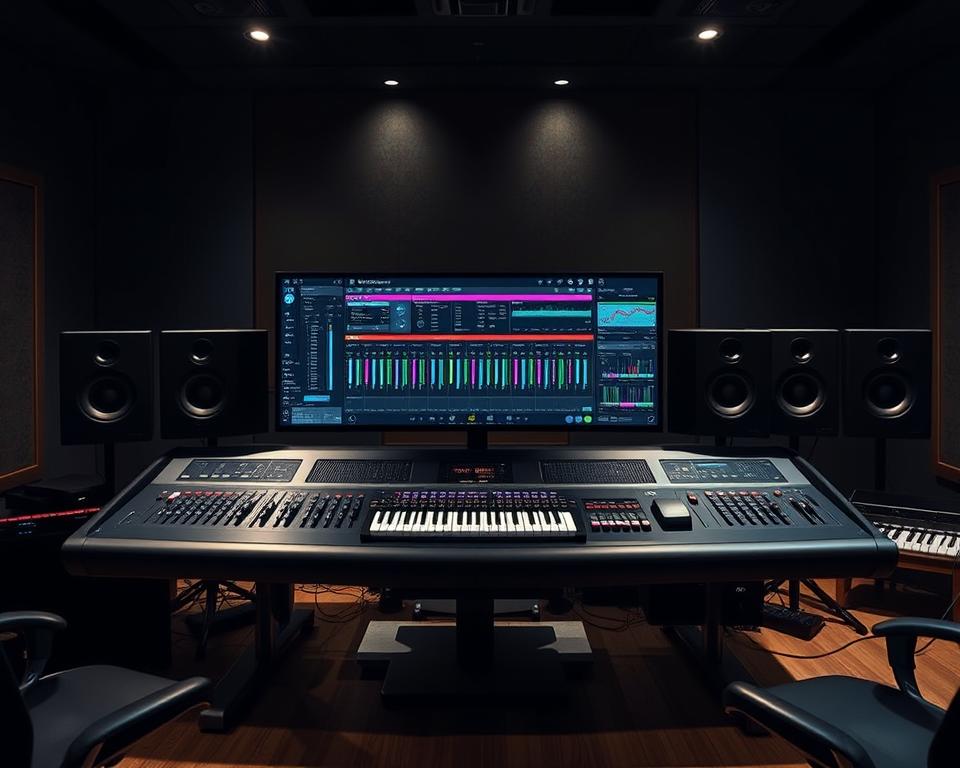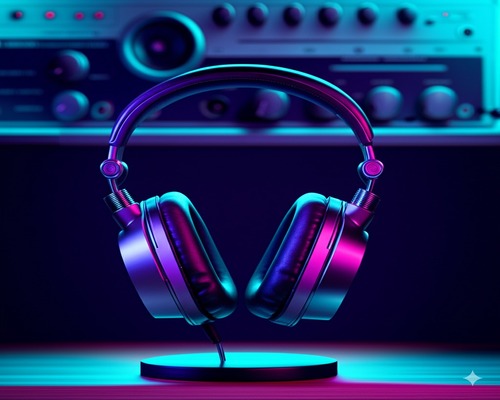
AI stem separation for sampling is the process of using artificial intelligence to split a full music track into individual components, like vocals, drums, bass, and instruments. This allows producers to isolate and reuse specific elements for creating remixes, mashups, and new compositions with greater flexibility and speed.
Have you ever heard a song and wished you could grab just the drums or vocals to use in your own music? That’s exactly what AI stem separation for sampling lets you do. This technology is changing how producers and musicians approach sample-based production, making creative sampling easier and more flexible than ever before.
What is AI Stem Separation and Why Does it Matter for Sampling?
So what exactly is AI stem separation for sampling? Think of it like this: most songs are like a pot of soup where all the ingredients are mixed together. Once they’re combined, you can’t easily take out just the carrots or just the potatoes, right? But stem extraction technology is like having a magic spoon that can somehow pull out just the carrots, leaving everything else behind.
This tech uses audio source separation AI to pick apart songs into their basic pieces – vocals, drums, bass, guitar, and so on. It’s pretty amazing when you think about it — and it’s opening up creative possibilities that simply weren’t possible before.
For producers and beatmakers, this is huge. Before this technology, if you wanted to sample just the drums from a song, you were out of luck unless you had the original studio recordings (which almost nobody has). You’d end up with vocals and other instruments in your sample, or you’d have to find instrumental breaks in the song where the drums played alone.
Now? You can grab just those killer drums from any part of any song. Want just the bassline from an old funk track? No problem. Need those vocal isolation technology from a classic soul record? The AI can pull them out for you.
According to Voice AI, this has completely changed what’s possible with creative sampling techniques. Producers can now work with parts of songs that were locked away in mixed recordings. It’s opened up a whole new world of sounds to work with.

Benefits of using AI stem separation for sampling include:
- Access to clean, isolated sounds from any recording
- More creative flexibility for remixing and sampling
- The ability to repurpose elements from favorite songs
- No need for expensive studio access or original multitracks
This technology bridges the gap between professional and bedroom producers, giving everyone access to high-quality sampling capabilities. Whether you’re creating AI-assisted music mastering or building a sample library, music stem extraction tools have become essential resources for music production with AI.
How AI Audio Separation Algorithms Work
The science behind AI stem separation for sampling is pretty smart but not too complicated to understand. These systems use neural network stem separation – computer systems that learn from examples, similar to how our brains work.
Here’s what happens behind the scenes:
- The AI converts audio into visual representations called spectrograms
- Special neural networks (usually U-Net or similar architectures) analyze these spectrograms
- The audio isolation algorithms identify patterns associated with different instruments based on training
- It then separates the audio into different stems based on these identified patterns
As explained by Dot Com Magazine, tools like Spleeter use these techniques to process music in ways that were unimaginable just a few years ago. The algorithms have been trained on thousands of songs, teaching them to recognize what drums, vocals, and other instruments sound like, even when they’re all playing at once.
This approach works much better than older methods that just tried to filter certain frequencies, which never really worked well. AI audio demixing understands context and makes intelligent decisions about which sounds belong to which instrument, making it perfect for those looking for the best AI tools for isolating drums from mixed recordings.
Evolution of Stem Separation Tools for Music Producers
Stem separation has come a long way in a short time. Let’s look at how these tools have evolved:
From Basic Filtering to AI-Powered Separation
The journey of audio separation technology shows how far we’ve come:
- 1990s-2000s: Basic frequency filtering and phase cancellation
- 2010s: Early machine learning approaches with limited results
- 2018-2020: First generation of accessible AI tools like Spleeter
- 2021-2023: Improved quality with more specialized models
- 2024-2025: Nearly perfect separation with minimal artifacts
This rapid evolution has completely changed how producers approach sampling. What was once a technical limitation – the inability to isolate sounds from a mixed recording – is now just another creative choice.
Today’s tools like LALAL.AI, PhonicMind, and Spleeter offer varying levels of quality and specialization. Some focus on vocal extraction for karaoke, while others are designed specifically for producers looking to extract clean samples for music production.

Key Benefits of AI Stem Separation for Sampling
The impact of AI stem separation for sampling on music production cannot be overstated. Let’s break down the main advantages:
Enhanced Sampling Precision with AI Audio Extraction
Modern AI separation tools give you remarkably clean extractions. This means:
- Drum breaks without bleed from other instruments
- Vocal phrases with minimal background noise
- Bass lines isolated from kick drums
- Guitar parts separated from other melodic elements
This precision lets you integrate samples more naturally into your productions. This technology delivers “significantly cleaner extractions compared to traditional methods,” allowing for seamless integration of samples into new tracks.
Learning how to use AI stem separation for hip-hop sampling has become essential knowledge for modern producers. When creating hip-hop beats with AI tools, this precision becomes even more valuable, as clean drum breaks are essential for creating that perfect groove. The professional sampling techniques using stem separation now available have transformed what’s possible in beat-making.
Democratizing Access to Professional Sampling Techniques
Perhaps the biggest impact of AI stem separation for sampling is how it’s leveled the playing field:
- Bedroom producers can access sampling techniques once limited to major studios
- No need for expensive hardware or rare multitrack recordings
- Accessible online tools with simple interfaces
- Affordable subscription options for various budgets
This democratization has led to an explosion of creativity in electronic dance music and other sample-based genres. Artists without industry connections can now work with high-quality samples extracted from commercial recordings.
AI Stem Separation Applications in Music Production Workflow
AI stem separation for sampling fits into music production workflows in several powerful ways:
Remix and Mashup Creation Using Separated Stems
AI separation has transformed the remix scene:
- DJs can create professional-quality remixes from commercially released tracks
- Producers can blend vocals from one genre with instruments from another
- Mashup artists can combine elements with unprecedented clarity
- Live performers can isolate parts for real-time manipulation
The ability to extract clean vocals has been particularly revolutionary for creating remixes and mashups with AI. What once required official stem releases from artists can now be done with any commercial recording.
Sample Library Development Through AI Extraction
Many producers are building personal sample libraries using creating remix stems with artificial intelligence:
- Collecting unique drum sounds from favorite recordings
- Building vocal phrase libraries for electronic music
- Extracting signature bass lines for inspiration
- Creating instrument-specific collections for future projects
These custom libraries become valuable resources that help producers develop their signature sound. When combined with AI music mastering techniques, these samples can be processed to fit perfectly within any mix. The combination of AI-powered mixing tools with stem separation creates a powerful workflow for sample-based producers.

Advanced AI Models for High-Quality Stem Separation
Not all AI stem separation for sampling tools are created equal. Various AI architectures offer different capabilities:
Comparing Deep Neural Network Approaches for Audio Separation
Several neural network architectures are commonly used:
- U-Net: Treats audio spectrograms like images, excellent for general separation
- Convolutional Neural Networks (CNNs): Good at identifying patterns in spectrograms
- Recurrent Neural Networks (RNNs): Better for capturing temporal relationships in audio
- Transformers: Newer models that excel at understanding context and relationships
Each approach has strengths for different audio material. Some work better for vocals, others for drums or specific instruments. The best tools often combine multiple approaches for optimal results.
Real-Time Stem Separation for Live Performance Applications
Recent advances have made real-time separation possible:
- Live performers can isolate elements on the fly
- DJs can create dynamic remixes during sets
- Studio producers can audition separations immediately
- Interactive installations can respond to specific musical elements
This real-time capability opens new possibilities for live electronic music performance and interactive installations. As processing power continues to improve, these real-time applications will become even more sophisticated.
Ethical and Legal Considerations in AI-Based Sampling
While AI stem separation for sampling offers exciting creative possibilities, it also raises important ethical and legal questions:
Navigating Copyright Issues with AI-Extracted Samples
The legal landscape remains complex:
- Extracting samples doesn’t change copyright considerations
- Permission is still required for commercial use in most jurisdictions
- Fair use/fair dealing exceptions vary by country
- Length and transformative nature of sampling affects legal standing
As pointed out by Start Digital, “When producers use AI tools to extract samples from copyrighted works, they enter complex legal territory similar to traditional sampling.” The technology makes extraction easier but doesn’t change the underlying copyright laws.
Producers working with AI stem separation for sampling should familiarize themselves with sampling laws in their region and consider sample clearance for commercial releases.
Balancing Creativity and Attribution in AI-Assisted Production
Ethical considerations go beyond legal requirements:
- Acknowledging sample sources when appropriate
- Transforming samples creatively rather than copying
- Respecting artists’ creative work while building upon it
- Considering the impact on original artists and rights holders
Many producers in the AI music community advocate for an ethical approach that balances creative freedom with respect for original creators. This might include crediting sample sources, obtaining permission when possible, and focusing on transformative use.

The Future Integration of Streaming APIs with Stem Separation
A particularly exciting frontier involves combining AI stem separation for sampling with streaming platform APIs:
Creating Interactive Remixing Experiences Through Platform Integration
Future applications could include:
- Streaming platforms offering stem separation as a built-in feature
- Listeners creating personalized mixes of their favorite tracks
- Collaborative remixing communities within streaming platforms
- Educational tools that break down songs for learning purposes
As described in developer resources, these integrations could transform passive listening into interactive experiences. Imagine adjusting the bass level or removing vocals while streaming your favorite track – this capability is rapidly approaching reality.
Collaborative Production Possibilities Through Cloud-Based Stem Sharing
Cloud-based stem sharing opens new collaborative workflows:
- Producers sharing isolated elements rather than complete mixes
- Remote collaboration focused on specific musical components
- Version control for individual stems
- AI-assisted stem organization and management
These technologies align perfectly with trends in AI music production tools and could fundamentally change how artists collaborate across distances.
Real-World Applications and Use Cases
AI stem separation for sampling is already being used by professionals across the industry:
Professional Remix Production Examples
Real-world examples showcase the technology’s potential:
- Dua Lipa’s “Levitating” remixes utilized stem separation to isolate vocals
- Skrillex has incorporated AI-separated drum patterns from classic breaks
- KAYTRANADA has used vocal isolations for sample-heavy productions
- Four Tet has employed stem separation for texture extraction and manipulation
These high-profile uses demonstrate how AI stem separation for sampling has been embraced even at the highest levels of music production.
Film and Media Sound Design Applications
Beyond music production, stem separation has found uses in other media:
- Hans Zimmer’s team has utilized stem separation to repurpose orchestral recordings
- Game developers at EA Sports have isolated crowd chants from live sports recordings
- Film restoration teams have separated dialogue from background music in classic films
- Podcast producers have cleaned up archival audio by isolating speech
These applications show the versatility of the technology beyond traditional music sampling, particularly in ambient and experimental contexts.
The Transformative Impact of AI Stem Separation on Music Production
AI stem separation for sampling has fundamentally changed how producers approach their craft. By providing access to previously inseparable elements of recorded music, this technology has democratized creative possibilities and expanded the sonic palette available to music creators at all levels.
The ability to extract clean, isolated stems from any recording has transformed sampling from a technical challenge into a purely creative process. Producers exploring AI in music production no longer need to work around limitations of mixed recordings or hunt for rare multitrack sources – they can simply extract exactly what they need.
As the technology continues to improve, we can expect even cleaner separations, more specialized tools, and deeper integration with other music production software. For those tracking AI music news and trends, the evolution of stem extraction technology remains one of the most exciting developments. The creative possibilities of AI stem separation for sampling are just beginning to be explored, and the future looks incredibly bright for sample-based music production.
Frequently Asked Questions
- What is AI stem separation and how does it work for sampling? AI stem separation uses neural networks to analyze audio and separate it into individual components like vocals, drums, and instruments, making these elements available for sampling in new productions.
- Are samples created through AI stem separation legal to use? Legal considerations for AI-separated samples are similar to traditional sampling – permission is generally required for commercial use, though fair use exceptions may apply in some cases and jurisdictions.
- Which AI stem separation tools provide the best quality for music producers? Popular high-quality options include LALAL.AI, PhonicMind, and Spleeter, though the “best” tool depends on your specific separation needs and budget.
- Can AI separate any instrument from any recording perfectly? While modern AI is remarkably effective, separation quality varies based on the complexity of the original mix, instrument similarity, and recording quality. Results continue to improve with each generation of tools.
- How has AI stem separation changed the music production landscape? It has democratized access to professional sampling techniques, enabled more creative remixing possibilities, simplified the sampling workflow, and created new opportunities for collaboration and education.
-
Source References


